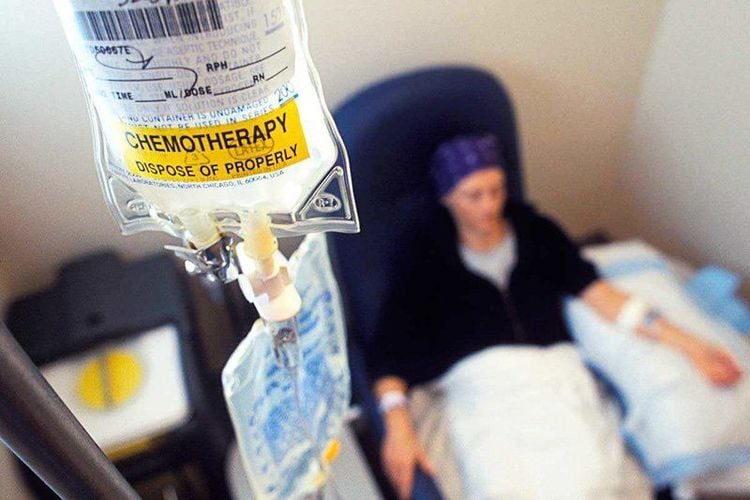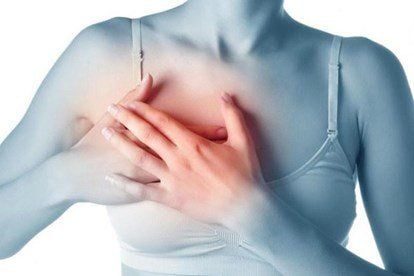This is an automatically translated article.
The article was written by doctors of Internal Oncology Department - Vinmec Times City International General Hospital.Triple-negative breast cancer is different from the more common types of breast cancer. This disease is difficult to treat and much more malignant. Because of its malignancy and rarity, patients with triple-negative breast cancer have few treatment options. The disease also has a higher recurrence rate. According to published figures, this type of cancer accounts for about 10-20% of all breast cancers.
This article discusses the risk factors, diagnoses, and treatments available for triple negative breast cancer.
1. What is triple negative breast cancer?
Triple-negative breast cancer is a negative test for three receptors: estrogen, progesterone, and human epidermal growth factor receptor 2 (HER2). It is also the least common form of breast cancer and the most difficult to treat.
To understand triple negative breast cancer, we need to know about breast cancers that test positive for one or more of the receptors mentioned above. They are:
Estrogen receptor positive. Progesterone receptor positive. HER2 receptor positive. Progesterone and estrogen receptor-positive breast cancers are the most common. Progesterone and estrogen are the two main sex hormones in women.
There are endocrine therapies to treat and prevent recurrence for people who develop one of these types. In fact, many breast cancers are estrogen and progesterone positive. If one hormone therapy doesn't work, the other will usually give positive results.
HER2 receptor-positive breast cancer is less common. About 20% of breast cancers are HER2 positive. HER2 is the name of the gene and the name of the protein it makes to stimulate growth.
HER2-positive breast cancer cells have a lot of HER2 receptors on their surface. Like hormone receptor-induced breast cancer, different therapeutic options that target the HER2 receptor can help treat this type of cancer.

Ung thư vú đều dương tính với estrogen và progesterone
2. Risk factors for triple negative breast cancer
Researchers have identified the following risk factors for developing triple negative breast cancer compared with other types.
Obesity and inactivity: Studies show that people who are obese and have a higher body mass index (BMI) have a higher risk of triple negative breast cancer. This group includes people who are not very active.
Genetics: A 2018 study in the journal US National Cancer Institute has identified several genes that are associated with a high risk of triple negative breast cancer.
Specifically, about 70% of breast cancers in people with BRCA gene mutations are triple negative.
If doctors know a person has a family history of breast cancer, this will help them determine if the person has an increased risk of developing breast cancer in the future.
Age: People under 50 have a higher risk of triple negative breast cancer.
Religion: African American and Hispanic women are more susceptible to triple negative breast cancer.
Pregnancy: A small study from 2015 found that women who had been pregnant with breast cancer were more likely to have triple negative compared with women who had never been pregnant.
The authors explain that this may be due to genetic patterns in women who have previously had children. However, the sample size of this study was very small.
3. How is triple negative breast cancer diagnosed?
Biopsy can help doctors diagnose triple negative breast cancer.
Diagnosis of triple negative breast cancer begins with finding a small, hard bump on or near the breast.
When a growth is detected, the doctor will take tissue samples. This procedure is called a biopsy. In many cases, your doctor will extract tissue from a suspected tumor using a needle. They will then send the sample to a lab for further testing.
The laboratory staff will then send back a pathology report to the doctor detailing the type of cells in the tumor. In some people it is benign, meaning no cancer cells. However, in some people it is cancer.
Pathology report will also highlight the type of breast cancer . A person whose cancer tests negative for estrogen, progesterone, and HER2 receptors will be diagnosed with triple negative breast cancer.
The doctor will then stage the cancer based on the biopsy results and any follow-up scans. They calculate the stage based on the size of the tumor and how far the cancer has spread, if any.
Stage 0 breast cancer has not spread from the original site in the breast. It remains confined to the ducts or lobules and is considered noninvasive. In stages 1-3, the cancer is invasive and has spread into the breast tissue. The higher the stage, the larger the original tumor or the more the cancer has spread. Note that cancer has not spread beyond the breast and lymph nodes at these stages.
In stage 4 the cancer has spread to organs and tissues other than the breast, most commonly the liver, lung, bone or brain.
4. Treatment of triple negative breast cancer
There are fewer treatment options for triple negative breast cancer than other types of breast cancer.
Hormone treatment is not effective for triple negative breast cancer, because of the lack of estrogen and progesterone receptors.
However, there are a number of other treatments available and researchers are looking for a number of complementary drugs to help treat and prevent this type of malignancy.
Currently, treatment options for triple negative breast cancer include:
Surgery: Surgical options include partial removal (tumor removal) or complete removal (mastectomy) one or both two breasts.
The choice of surgery depends on many factors, such as tumor size, family history of gene mutations, and personal preferences.
Radiation therapy: Radiation therapy is another potential treatment option for people with triple negative breast cancer. Radiation kills cancer cells to stop their growth and spread.
Chemotherapy: A 2015 study found that chemotherapy is the most effective treatment option for triple negative breast cancer.
During chemotherapy, the patient receives a combination of drugs that kill breast cancer cells.
Patients should talk with their doctor to develop the most appropriate treatment plan about the steps to treat their cancer, self-care measures and what to do in case the cancer does not respond to treatment or begins to spread. wide.
An important part of the treatment plan is physical activity and a healthy diet. The side effects of cancer treatment can be difficult to manage, so maintaining a healthy diet, regular exercise, and rest will help improve these side effects.

Hóa trị là liệu pháp điều trị ung thư phổ biến nhưng khá tốn kém
5. Prospects for patients with triple negative breast cancer
Researchers describe expectations of cancer 5-year survival rates. The prognosis for triple-negative breast cancer is worse than for other cancers. The overall prognosis depends on the stage of the cancer at diagnosis.
A 2018 retrospective study of women with stage 1 and 3 breast cancer found that the overall 5-year survival rate for this type of breast cancer was 62.1% and the disease-free survival at 5 years is 57.5%.
Disease-free survival means the cancer hasn't come back for 5 years. Cancers that doctors diagnose at stage 3 have a worse prognosis than those they diagnose at stage 1-2.
However, survival and prognosis vary from person to person. Many factors can affect a person's outlook after treatment, including:
When they find out their cancer and start treatment. The stage of the cancer and whether it has spread to other tissues and organs. How the cancer responds to treatment. Diagnosis of cancer at an early stage and effective treatment will help improve the prognosis.
Please dial HOTLINE for more information or register for an appointment HERE. Download MyVinmec app to make appointments faster and to manage your bookings easily.
Reference source: cancer.net












